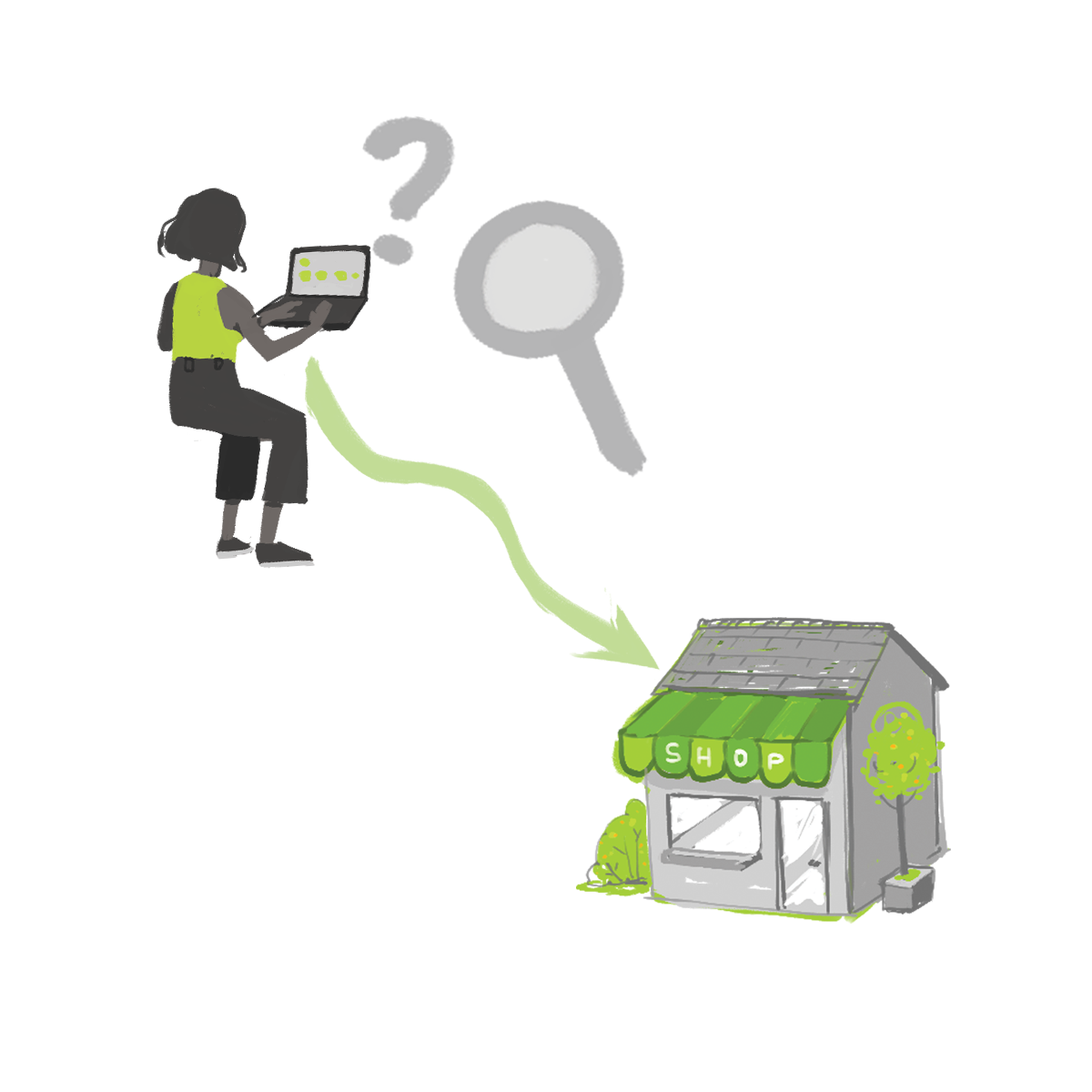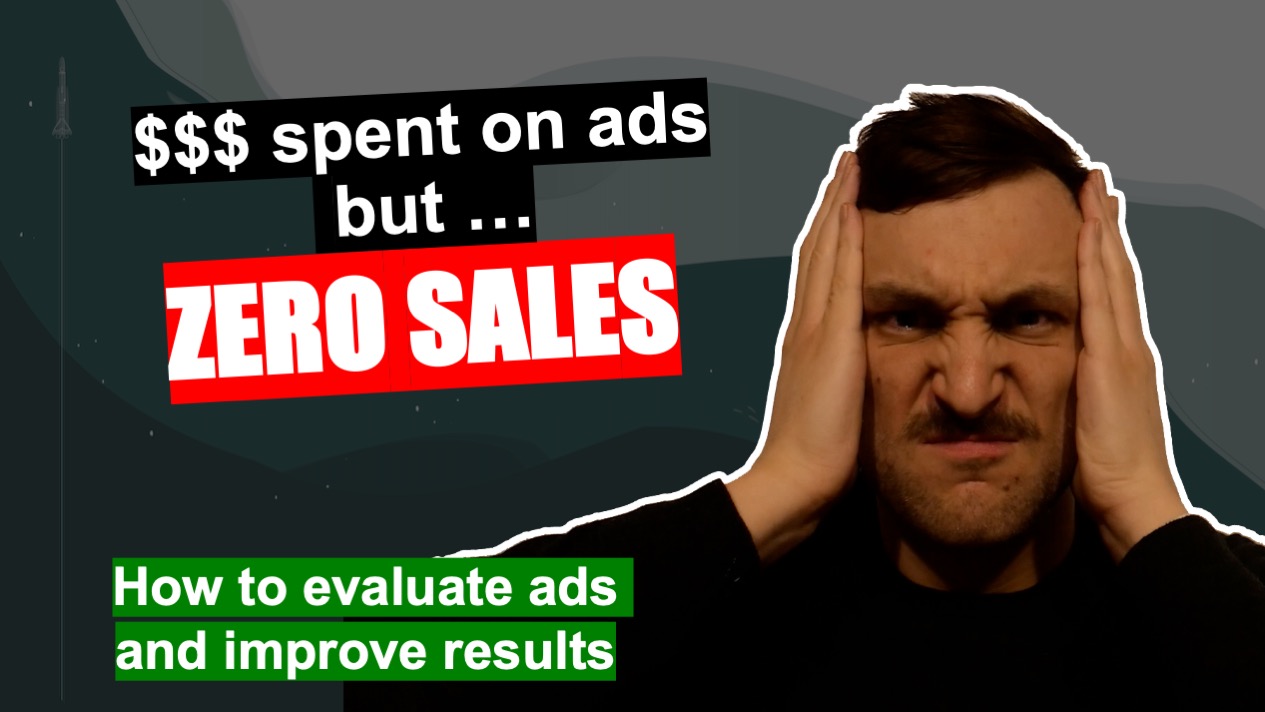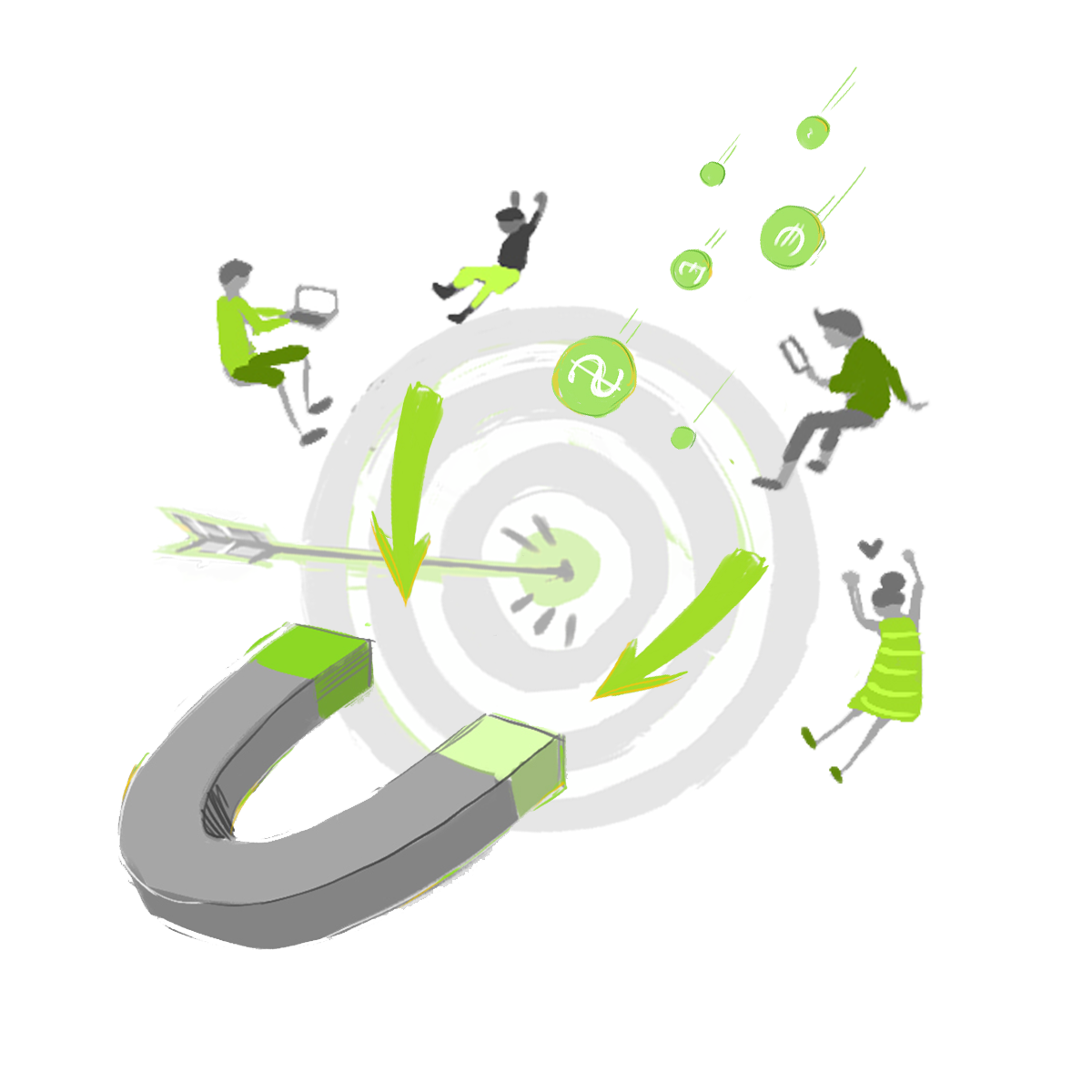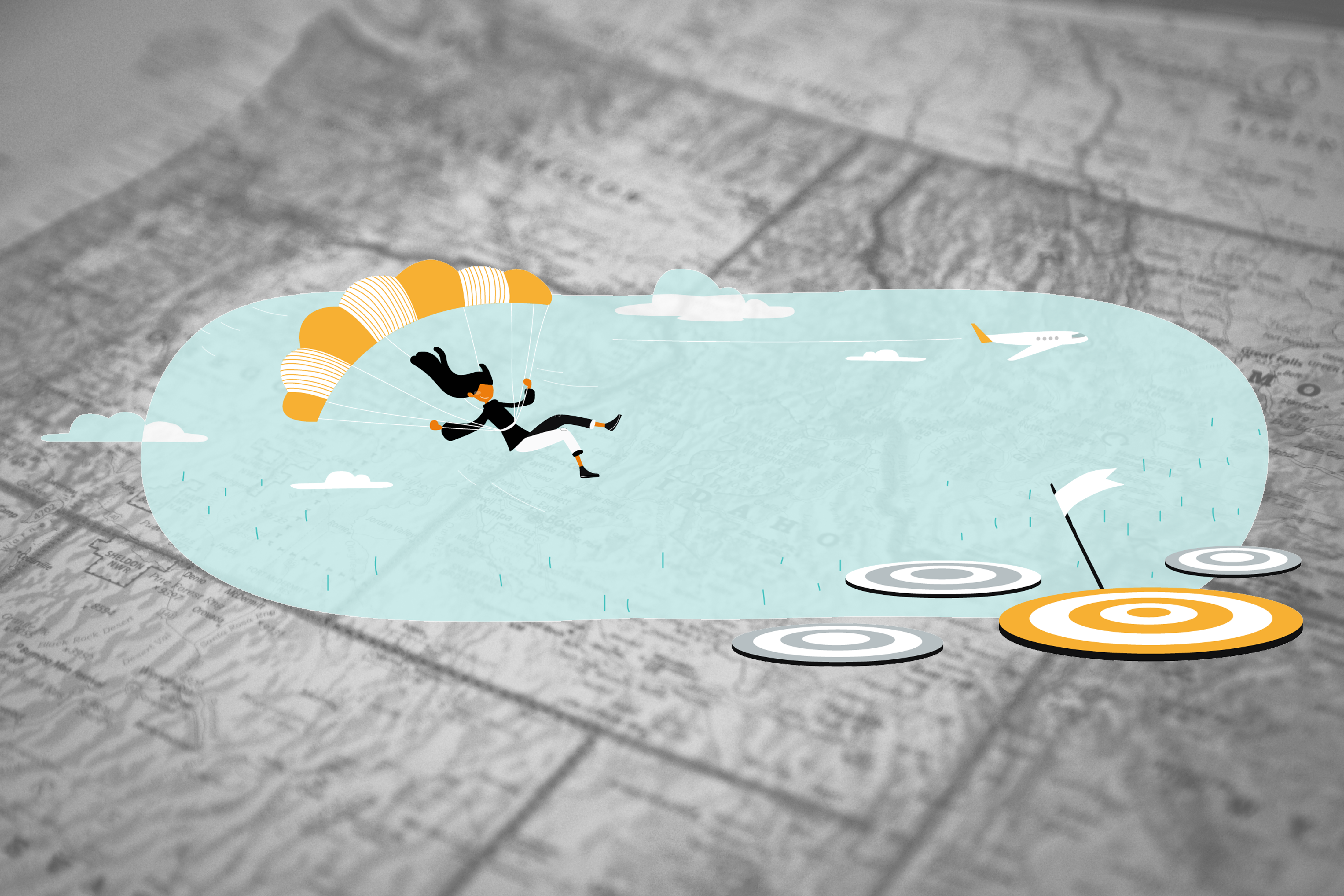What is Search Engine Optimization?

What Exactly is SEO? What Value Does it Add to my Business?
Google defines Search Engine Optimization (SEO) as “making your site better for search engines.” Put another way, SEO are all the changes to your text that make your site “ping” on Google’s algorithm when users execute a search!
Crawling for New Content – How Google Discovers your Site
How does it do that, you ask? Well, Google didn’t become a tech powerhouse for no reason. Google employs automated “web crawlers” that look for new/updated web pages based on how the site connects to the rest of the internet… hence the term “internet.” Basically, Google finds your page based on how it interlinks and interconnects to the rest of the web!
Indexed for Info – Google Programs Analyze Webpage Text to Evaluate Content
After Google discovers that your site exists among the 50 billion online web pages (congrats!) Google “indexes” the site’s content, using software to try and figure out the “purpose and place” of your online business. To check if your site is properly indexed on Google, type in “site:_________” and past your url into the blank.
There you Are – Having Google List Businesses on Search Results
After figuring out the “purpose and place” of your online site, Google will begin listing your business. The user’s location, language, device, and previous search history all play a role in what pops up for them, but those factors are out of your control.
It’s time to put in stark terms how vital SEO is for growing your business!
Introduction – Tell me WHY SEO is Important
If you ever question, “Why is it important for my business to rank on Google anyway,” consider this fact:
71% of all online users click through from the “first page” search results
With that in mind, it’s essential for any online business to identify the most commonly searched keywords/phrases when customers are browsing for your line of products. If you are serious about leveraging online search engines to optimize your sales growth, learning to “move up the rankings” through SEO is a must! Organic SEO growth is more effective at growing sales and driving traffic to your website than virtually any other online tool. Remember that there are over 5 billion searches conducted on Google per day. Being at the top of the list for the searches pertaining to your business… you can see how that might spur sales growth!
Picture This – Example of SEO’s Utility for Growing Sales
For a quick hypothetical – picture you’re a custom soap maker. You’ve taken a 360 degree view of your online marketing, and every time a user searches the phrases, “custom soap,” “boutique soap,” or “soap for sensitive skin,” your site pops up as one of the top three results. Just by that remarkable visibility alone, you’re going to receive a steady, consistent stream of sales no matter where else you advertise. Think about it! Google’s search engine is literally advertising for you!
However, to get to a place where SEO is, in a sense, doing your promotional work for you, it takes in-depth research and serious legwork to perfect your site’s key phrasing and text. Every line of business needs a wholly unique approach to their SEO, while still hitting the most relevant key phrases universally searched online… this part is easier said than done.
How Online Business Make Quality SEO Webpages
Making unique, engaging online content involves some artful human ingenuity, but there are specific metrics and guidelines to follow for how you structure that content to best optimize search results.
- Aim to be descriptive as possible with all titles and headings
No need to be wordy, but picture a software crawler… it’s not as smart a human! You need to be really clear with titles so the crawler software goes, “Oh! I get that!” You’re not just writing for your customers – you’re writing for the online ecosystem as a whole.
2. Make Each Webpage Stand Alone as a “Complete” Entity
We love a phrase Google uses when giving the 411 basics on SEO, “Google is smart, but we can’t guess what you don’t tell us.” It’s easy, as a business owner, to assume the folks reading are making the same leaps in logic you are… but they aren’t! Neither are Google’s programs. Give a logical rundown of your entire business offerings; don’t assume Google gets what you imply. Even if it seems painfully obvious to you, give Google a break – it’s sifting through 50 billion webpages!
3. Be Topical, Be Up-to-Date
Show your business can grow and change with the seasons – think holiday bundles and special deals of that nature! Those updates keep your business moving up the search queue, as Google will record, “These guys are with the times, maaaan.” We’re pretty sure that’s how Google software talks when no one is listening 🙂
4. USE TEXT!
Let’s start by acknowledging how cool it is to be able to share and upload pictures/videos with one click – memes have straight up changed the world. HOWEVER! When it comes to growing your sales through SEO, Google software still understands text formats more effectively than others. While having an aesthetically pleasing and dynamic webpage, complete with aural-visual elements, is highly recommended, it should not come at the cost of accompanying text. Having clear textual complements to any picture and video on your site will benefit your business greatly in terms of growing sales. Don’t have any picture/video without at least a little caption of explanatory text attached!
Most Important Web Elements for your Site’s SEO Rank
To give you a 360 degree view of SEO, we thought we’d leave readers with a list of all the design, web, and marketing research factors that improve your site’s “searchability” for boosting sales:
- Site content
- Site structure/Web Page layout
- Intersection with online ad campaigns
- Keyword research (e.g. – Term frequency-inverse document frequency analysis)
- SEO development
- Precision marketing to specific market “niches” or geographic locations
Modifying a single keyword/phrase can be the difference between Google finding 10 million or 100 million results. Market research on these keywords, therefore, are essential to aligning your online business with the most precise, potent keywords related to your industry!
Conclusion: Using the Right Tools for SEO Sales Success
We know that it feels a bit overwhelming that all these different factors play into SEO. Some business owners have all the savvy on their products they ever need, but figuring out the most SEO-friendly text to convey the value and purpose of their services becomes a whole challenge in itself.
If you feel your business would benefit from 24/7, 360 degree support, reach out to try a free demo from Ad360 today! As a proud Google partner recognized for our ability to maximize company sales, Ad360 has all the tools, analytics, and organizational expertise to push your business to the top of the Google chart 😉 Drop us a line today for a free SEO consultation – we look forward to your future sales success.
How much to spend on your first ads?

Today we present one of the videos we’ve published in our YouTube channel:
Ecommerce Success by Ad360,
the channel where we share tips, news, best practices to help business owners be happy, productive, and successful!
We publish videos every day about e-commerce, marketing, advertising and all things online business. If you’re running an online store and want to get regular tips to grow your sales, we recommend you subscribe to the channel!
How much money to spend on your first ads before you get sales
In this video, we go over a reddit post. We respond to the questions of a business owner who wonders about their lack of sales after starting running some ads.
In addition we share some insights and stats about advertising. Among key questions:
– how much money you need to spend on ads before you have sufficient data to draw conclusions
– how much to budget when you get started with ads
– how to evaluate whether you have a good conversion rate
– what to do to increase ads outcomes
Ad360’s mission is to make millions of merchants happy and successful. We take care of all your promotional activities, allowing you to focus on your passion & core business.
HyperTargeting: Tomorrow’s Marketing

While “geo” and hyperlocal ad targeting grow local brand awareness, hypertargeting organizes your audience based on their shared interests and identities – rather than geographic location. Read more about this incredible marketing technique below!
Introduction
In the fast-moving world of online advertising, it is clear that customer data is king. Thou who holds the data holds the key to their business’s future! It can take a minute to wrap your head around. Still, market surveys show that ~65% of all online users are willing to share personal data… so long as it leads to a high-quality ad experience catered to their interests. If not, folks consider it an obnoxious intrusion into their personal lives, making it quite the tightrope to walk for Shopify business owners looking to expand their customer outreach and increase sales.
So, how do Shopify store owners gather this high-value customer data from scratch? And how do they make sure they target the right niche and “buyer personas” most likely to have an affinity for their products? Capturing, organizing, and acting effectively on customer data is a major undertaking. But, no worries – Ad360 is here to give you a 360-degree view of one of the most effective online marketing strategies today: Hypertargeted advertising.
Hypertargeting
Consider hypertargeting a “distant cousin” of geotargeting. While the aim of optimizing customer outreach remains the same, the focus is not based on location, but rather on specific traits of customers. The marketing strategy works by creating categories of “buyer personas” that inform the most effective forms of marketing outreach to them.
You know those popups that ask if you’re ok with something like “enabling personal cookies?” By granting permission to store personalized customer data, Shopify business owners get a better sense of who their audience really is, what they value, and what they like to see in the brands they support with their dollars.Done tastefully and strategically, hypertargeting has the potential to grow Shopify sales while establishing a clearly defined “niche” audience your store can tailor its message directly to!
Over time, hypertargeting becomes more effective as you identify the groups of customers most likely to click “buy” on your Shopify site 😉. A list of standard “hypertargeting” customer classifications are listed below:
- Demographics – Gender, age brackets, and other personally identifying traits help concentrate your ads to your ideal niche market.
- Geographic Location – Specific places like country/state/city, or a shape drawn on a map of who sees the ads, even down to a single city block!
- Expressed User Interests – what keywords they recently searched or info they’ve willingly shared on social media or through past search engine queries.
- Previous Site Visitors or Social Media Connections – Similar to ad retargeting, hypertargeting features can be concentrated only on those who have already engaged with your business in some form or fashion online.
- Device-specific – Concentrate ads to a particular device, including mobile, tablet, computer, or Smart TVs.
- Past Buying Habits – Ads are directed only to customers whose shared browsing habits reveal they have purchased products similar to yours in the past.
While it takes some rounds of A/B to get right, hypertargeting for ads is one of the best strategies to grow your sales and optimize your online marketing budget. As you gradually establish the trends of which customer segments demonstrate the most interest in your store, you can tailor your promotional efforts further and further until they truly feel like “your peoples” 😊. That way, not only did you find a way to maximize customer outreach; you learned something about the community’s most willing to support your enterprise. Pretty special, if you ask us here at Ad360.
What’s more is that Ad360’s mission to help e-commerce business owners of all sizes to easily implement advanced advertising techniques such as these ones. If you want to learn how you can benefit from hypertargeting in just a few clicks, book a demo today of Ad360 App for Shopify.
Geotargeting vs Hyperlocal advertising

Introduction
Have you ever heard your friends remark something like this?
“It’s crazy, I looked up running shoes the other day, and now all these different ads are popping up for running shoes! It’s like the Internet is stalking me!”
Ha… well… um… kind of 😊 . We hope you understand that business owners don’t have unlimited marketing resources to grow a humble Shopify store. There’s no room to consistently buy random ad space and just hope that blasting out promotional material leads to healthy sales growth. Some of the most disappointing stories we see from failed Shopify store owners follow a familiar pattern. After successfully setting up their online store and spending hundreds to thousands of dollars on Facebook and Google ads… the store sees no bump in converted sales or even new visitors. None. Huge bummer.
Luckily, you can read below to get the 360-degree breakdown of how high-level promotional strategies like geotargeting and hypertargeting work! While not exactly the same, both online marketing techniques are designed to efficiently concentrate marketing dollars on only the most likely customers, optimizing your entire online operation.
Geotargeting
Broadly put, geotargeting organizes its marketing around a specified location – some of the most commonly used parameters to set this location are listed below:
- Radius Targeting – Target individuals within a precise radius based on your location (e.g., within 100 miles of your business headquarters)
- Zip Code
- City/State/Region/Country
- Special Venues or Landmarks – Examples include airports, concert halls, universities, shopping centers, or other relevant places of business.
These different customer categories and classifications based on geography can start to sound like a bunch of jargon, so let’s ground the concept in a real-life example: boutique hotels. Smaller hotel chains do exist, and they need a way to market themselves in a manner competitive with the obvious choices: Marriott, Hilton, and so on. However, their marketing budget is far more limited, so geotargeting becomes an essential tool to concentrate their customer outreach on a local or regional level.
Imagine, for example, that a boutique hotel in Palm Springs wants to reach new customers throughout California and Nevada. To do so, they organize a new mobile ad campaign that only targets customers who live within 150 miles and have executed searches online with the keywords “reservation,” “tonight,” and “today.” Seeing as 72% of mobile hotel bookings include some combination of those keywords, and occur within the last 48 hours before the trip (talk about last minute), a boutique hotel service could multiply its sales conversion rate by reaching target customers based on their specific location. That remarkably efficient, highly detailed marketing strategy is what makes geotargeting such an effective promotional tool for growing your Shopify sales online. Even better, venues within that locale can be excluded, so as to further optimize your geotargeting efforts and customer growth. Absolutely surgical precision 😊
Hyperlocal
Hyperlocal ad targeting gets its name from its ability to draw a “virtual fence” around your desired GPS coordinates – any individuals passing through the area seeing your ads instantly! Think of the countless times you’ve done a Google search for a “______ near me.” You probably did it just last week trying to find a new Thai food restaurant!
In fact, 46% of all Google searches contain the phrase “near me” (that’s ~1.5 trillion searches), and Google’s VP of marketing reported a 500% increase in “near me” searches with phrases like “to buy” from 2016-2018. Sounds like a massive local marketing goldmine to us!
Now, why is the marketing strategy called HYPERlocal, you ask?
You can pinpoint your targeted ads down to a single city block. It gives businesses the power to tailor their ad banners to very specific communities, tapping into the concept of “local tribes for local brands.” Seeing as 71% of customers prefer personalized local ads, Shopify store owners have an opportunity to grow sales and outcompete even the largest companies marketing in the area.
Large conglomerates make the mistake of categorizing customers into too broad of categories, and their marketing strategy suffers from bland messaging that locals ignore almost on instinct. With hyperlocal advertising, local businesses become as visible to their community as any large company online for a fraction of the cost. Your custom ad spots are tailored right to your neighborhood, boosting customer engagement without bloating your marketing budget.
Which is Best for You?
Now, as high-tech as geotargeting and hyperlocal advertising sound, they are easy to implement and automatically managed within the Ad360 App for Shopify. We offer both geotargeting and hyperlocal targeting, to help you optimize your sales growth through concentrated (and customized) marketing promotions.
Enter the digital marketing “big leagues” with a free demo from Ad360 today! Our 24/7 support will help you figure out when and where to deploy geotargeting & hyperlocal marketing strategies for maximized sales growth.
From “Just Browsing” to “Just Bought”

Why “Call to Action” Buttons Make Such a Difference
Introduction: No Call to Action, No Deal
I recently came across a beautiful website – one of the best designs I had seen in a while. They were marketing CBD products, and the entire aesthetic was simple yet elegant. Even more, the content wasn’t all “puff piece” superficial garbage; it went in-depth on all current research surrounding CBD, and each webpage seemed to load quicker than the last!
Needless to say, I was impressed… however, I didn’t end up making a purchase. Is it because I didn’t like the website? On the contrary! I had rarely felt this much trust after learning so much thanks to the store content. The problem is, I just kept scrolling and reading, and the website never reminded me that it was actually selling some products. If it had, I definitely would have bought it.
The problem is that after priming me up all this excellent info on CBD, it didn’t entice me to buy the products the website described so well.
I got a call from a friend, got up to speak outside… and totally forgot about the site. It was like my brain had filed the store under “purely informative content” rather than “potential new product.”
What was this lovely site missing? Simple. It lacked an effective “Call to Action” button to close the deal. As a potential customer, I never shifted gears from “just browsing” to “just bought.” It’s not that I didn’t love what the store offered, and how they presented it! The site just never prompted me to convert the sale.
This blog explores just how powerful a well-placed Call-to-Action (CTA) button is for growing your Shopify business! 70% of small businesses neglect this crucial promotional tool, which is shocking considering that a well-placed CTA button can multiply your conversion rate several times over.
Seeing as the average conversion rate for visitors to Shopify stores hovers between a paltry 1 and 3 percent, let’s explore exactly how and why CTA buttons are a turnkey solution for boosting your sales, and making your Shopify store a resounding success 😊
3 Second Attention-Span: People Skim the Web, They Don’t Surf it
The primary purpose and function of a CTA are not hard to grasp. It’s a clickable button on your website that gets noticed and encourages visitors to head right to checkout with your product. In traditional marketing, it’s that tagline at the end of commercials yelling, “BUY NOW, OR YOUR MONEY BACK! AVAILABLE FOR A LIMITED TIME ONLY!”
We know, that is super obnoxious. However, there are tasteful, elegant ways to present a CTA button on your website that, if anything, add to the aesthetic and dynamic function of your online store! On top of that, nearly half of all Shopify stores have a CTA link visible within 3 seconds of users scrolling their website. To stay competitive and boost sales, Shopify owners have to consider their marketing presentation for CTA buttons. Otherwise, they risk losing potential customers. Not because their product was deemed inadequate, but because it felt like too much of a “pain in the ass” to quickly checkout. Harsh, but true ☹
Core Design Features to Consider for a Successful CTA
The next natural question is, “How do I design and place my CTA, then?” Well, to start, you need to consider the core elements that make up the design of the CTA button itself:
- Color – How does the CTA button’s color differ from the rest of your site? The pattern, shading, and texture of the button should stick out from the rest of the webpage, without looking clunky. Easier said than done.
- Font – Using a bigger size font can also help optimize your CTA button for increased Shopify sales, so keep that in mind.
- Written text – Beyond a snappy message that captures your customer’s attention, even slight adjustments (like using 1st person vs. 2nd person) dramatically impact Shopify sales conversion rates.
- Background – Marketing researchers have found that CTA buttons surrounded by zero clutter and blank space increased conversion rates by 232%. Imagine that just “decluttering” your CTA button could increase your conversion rate from 5% to 11%.
Where to Place the Perfect “Call to Action” Button
First off, don’t limit your CTA buttons to only one place; the Shopify stores with the highest sales put tastefully made CTAs in multiple places on their webpage!
On top of that, it’s crucial to run A/B testing when trying different marketing strategies with your CTA messaging. That way, you can get valuable feedback on what is – and isn’t – working to increase your Shopify sales. The tracking data from what customers “click on” while browsing your site will tell you which CTA design best optimizes your Shopify sales growth.
Wherever your visitors’ focus concentrates the most, that is your “X marks the spot” for a clickable CTA button. This “sweet spot” for your CTA will change depending on whether the ad runs on the computer, tablet, or mobile, so make sure to keep that in mind! For example, placing the CTA button within the “natural thumb swiping range” can make a big difference on mobile, while placing the CTA “above the fold” in your email copy streamlines the checkout process on a laptop or tablet.
If you feel you would benefit from some support in perfecting your CTA design and message, please reach out to Ad360 today for a free demo!